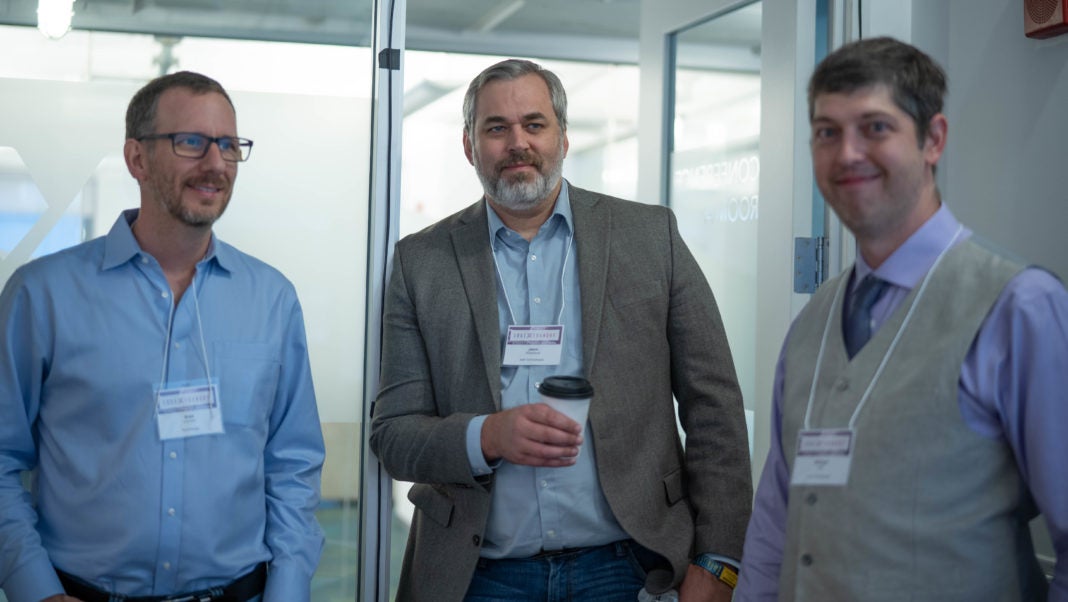The internet of things (IoT) is a diverse space, but it’s also fragmented by design, whether it’s consumer IoT or industrial IoT. In 2015, Dell started working on a project called Project Fuse to weave together the diverse and fragmented world of IoT. The idea was to build the right architecture for IoT and edge computing.
The team working on the project quickly realized that they needed to extend the cloud-native principles — things like microservice-based architectures and platform independence — as close as possible to the device edge so that there would be more flexibility in how solutions are devised. In order to succeed, the project needed to be vendor-neutral, interoperable and open.
That’s when they decided to contribute it to the Linux Foundation, and a new project — EdgeX Foundry — came to life.
EdgeX Foundry was designed with the notion of platform independence, polyglot and loosely coupled microservices that allow developers and operators to write different codebases, all bound together through an API set.
When EdgeX Foundry came to the Linux Foundation, it was a well-architected Java code. Over time, the code got a total revamp: Golang replaced Java, reducing the footprint from 2.5 GB of memory to 50 MB. It also made components swappable, so developers could use their preferred database, plugins, analytics and more.
EdgeX Foundry became all about how a developer can take any device and any number of protocols from the operations world — which could be IP-based, wireless mesh, serial-based technologies or proprietary technologies — and be able to write device inputs in a common format, using whatever protocol and format they want on top of it, and in whatever fashion. It’s like a universal translator in the middle, working with whatever other technologies users want to use with it.
“The principal premise is that if we can get enough folks on a common middle bus, we don’t need to have one standard to rule the world for protocol because that will never happen,” said Jason Shepherd, the Dell Technologies IoT and Edge Computing CTO. “A framework like EdgeX Foundry works like a bridge to weave it all together.”
Evolving with the Technology
EdgeX Foundry becomes even more significant as emerging technologies like artificial intelligence, machine learning and blockchain are maturating and being embraced.
“That’s why you need these loosely coupled frameworks so that even if the technologies we use change, the right framework will allow you to bring it together in any combination. It allows you to evolve as the technologies around you evolve,” Shepherd said.
Cloud-native technologies are more about the principles of delivering software and less about where it’s run. Traditionally, professionals from the operational technology (OT) world don’t want to update anything. If processes have been running for the last 20 years, they don’t want to touch those processes — ever.
On the contrary, the modern world is all about the continuous delivery of software.
“Your pace of innovation is your competitive advantage,” Shepherd said.
As the continuous delivery principles move closer to the physical world of edge computing devices, they start to show business value. There is no business incentive in having to manage a hundred platforms; the value is in building and leveraging domain knowledge applied in specialty applications.
The bottom line is that even folks from the OT world need to embrace cloud-native principles.
“Even if you’re not planning to do continuous delivery right now, even if the idea of continuous delivery freaks you out, you need to prepare now, because in the future you’re going to have to do it, either way, to keep up with your competitors,” Shepherd said. “It’s better to architect it now, even if you are working on your traditional models.”
Developers should start using open APIs, instead of reinventing everything.
“You can be part of a broader ecosystem so you can just focus on the pace of innovation that differentiates you from others and focus on the value that you bring to your customers,” Shepherd said.
Embracing New Business Models
The traditional IoT has been about monetizing from the hardware sale. In the modern world, it’s moving toward being service-oriented. Everything is a service, and the new mindset is about the value as service offers throughout its lifetime, not just the day it was shipped.
At the same time, the IoT is going across verticals, from home automation to enterprise, retail, energy, insurance, health care, and the automotive industry. Everything has to be interconnected. As new markets are emerging, IoT players should embrace not just new technologies, but also this new mindset of openness.
That’s where EdgeX Foundry becomes the foundational platform to application interoperability at the application layer. Under the Linux Foundation’s LF Edge umbrella, EdgeX Foundry is working with other projects like Acrn, Auto Edge and Home Edge, Eve and Fledge, which each solves a particular problem in the edge computing and IoT space.
Today, everyone wants to lock their users into their own ecosystem so they can keep you hooked and sell your data. Shepherd said he thinks that’s not the right way.
“The reality is you have to set the data free the moment it’s created and use technology to bring checks back from strangers,” he said. “This is how it’ll work.”



